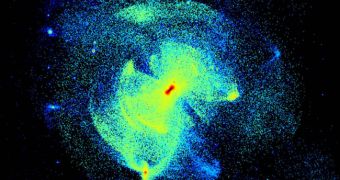According to the conclusions of a new astronomical investigation, it would appear that some of the oldest, most ancient stars in our galaxy, the Milky Way, may be immigrants. They may have arrived here from other galaxies, through a variety of means, experts say.
They say that not all ancient stars detected by astronomical surveys can be accounted for. The Milky Way began forming some 10 billion years ago, but some of the stars it now contains may have preceded it slightly, analysis reveal.
One of the main theories astronomers use to explain this is that these cosmic fireballs originate inside dwarf galaxies that were satellite to the Milky Way billions of years ago, before tidal and gravitational interactions split them apart.
The remnants then merged with our galaxy, triggering new spurts of stellar formation, and including these ancient stars in the current galactic roster. Scientists say that most of these interactions took place about five billion years ago.
Investigators at the Durham University Institute for Computational Cosmology led this investigation together with German colleagues from the Max Planck Institute for Astrophysics, and Dutch scientists at the Groningen University, Daily Galaxy reports.
The experts drew their conclusions from analysis of the results provided by the largest supercomputer simulation of galaxies similar to the Milky Way. The Aquarius Project seeks to make sense of how these massive galaxies came to be, and how they evolved over time.
This advanced computer model indicates that the stellar halo of debris surrounding the Milky Way may contain most of the ancient stars that were gobbled up during past galactic mergers.
“Our simulations show how different relics in the galaxy today, like these ancient stars, are related to events in the distant past,” says Durham astronomer Andrew Cooper.
“Like ancient rock strata that reveal the history of Earth, the stellar halo preserves a record of a dramatic primeval period in the life of the Milky Way which ended long before the Sun was born,” he adds.
“Effectively we became galactic archaeologists, hunting out the likely sites where ancient stars could be scattered around the galaxy,” the expert goes on to say.
“The simulations are a blueprint for galaxy formation,” adds the director of the Durham University Institute for Computational Cosmology, professor Carlos Frenk.
“They show that vital clues to the early, violent history of the Milky Way lie on our galactic doorstep. Our data will help observers decode the trials and tribulations of our galaxy in a similar way to how archaeologists work out how ancient Romans lived from the artifacts they left behind,” he concludes.

 14 DAY TRIAL //
14 DAY TRIAL //